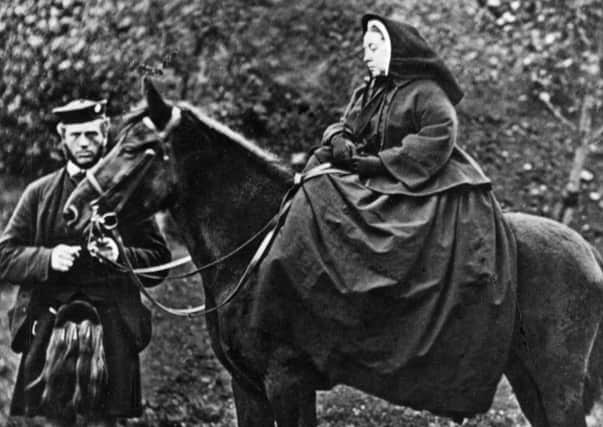Plot to kidnap Queen Victoria at Balmoral revealed


Previously classified documents reveal that Cabinet ministers and Scotland Yard feared Irish republicans would abduct the monarch at her Highland retreat.
Correspondence, which has been opened and placed at the National Archives at Kew, reveals the chief constable of Manchester raised the alarm in a message he sent to Scotland Yard on 14 October, 1867.
Advertisement
Hide AdThe extraordinary warning suggests that a respected former officer had got wind of plans by Irish militants – who referred to themselves as Fenians – to commit treason in the Highlands.
It states: “The informant is well acquainted with several Fenians in Salford and he has known them to have been in the habit of drilling with rifles in a field off Northumberland Street, Higher Broughton.
“Yesterday he was in a beerhouse in the company of between 30 and 40 of the above persons. It was arranged that a number of men should go to Scotland, their object being to seize the person of Her Majesty the Queen with whose daily habits they appear to be well acquainted.”
The letter claims the Queen was to be taken to an unnamed cottage while the chief plotters attempted to negotiate the release of imprisoned comrades.
Telegraphs sent from the Home Office show that orders were given for plainclothes officers to patrol north-bound trains and for others to be put on guard throughout the Balmoral area. One briefing note states: “Suspicious persons are to be watched to ascertain their movements and to discover whether they are armed.
“A cutlass and a revolver are to be taken for each man.”
However, a telegraph sent from Balmoral by an Inspector Mather to the headquarters of the Metropolitan Police saw the huge security operation scaled down. Dated Tuesday, 16 October, it states: “All quiet on Deeside. No strangers about.”
Advertisement
Hide AdDespite the state of alarm being lessened, it was agreed the Queen would make her return journey during daylight hours so as to minimise the risk of a surprise attack being carried out. It is not known if the plan was abandoned after the plotters realised the police were on to them or whether it was a misunderstanding or a deliberate piece of misinformation devised to cause panic at the heart of the Establishment.
The fellowship of the Fenians
“Fenian” was an umbrella term for the Fenian Brotherhood and Irish Republican Brotherhood, which were fraternal organisations dedicated to the establishment of an independent Irish Republic in the 19th and early 20th century.
Advertisement
Hide AdThe term was first applied by John O’Mahony to the members of the Irish republican group that he founded in the United States in 1848.
O’Mahony, who was a Celtic scholar, named the American wing of the movement after the Fianna. In Gaelic Ireland, these were warrior bands of young men who lived apart from society and could be called upon in times of war.
The term Fenian is still used today, especially in Northern Ireland and Scotland, where its original meaning has widened to include, in a pejorative sense, all supporters of Irish nationalism.